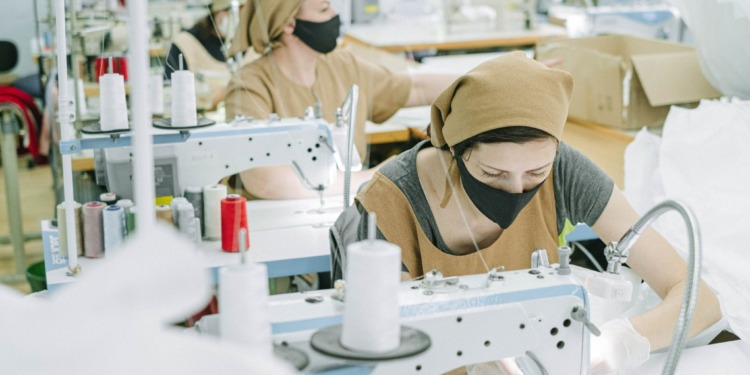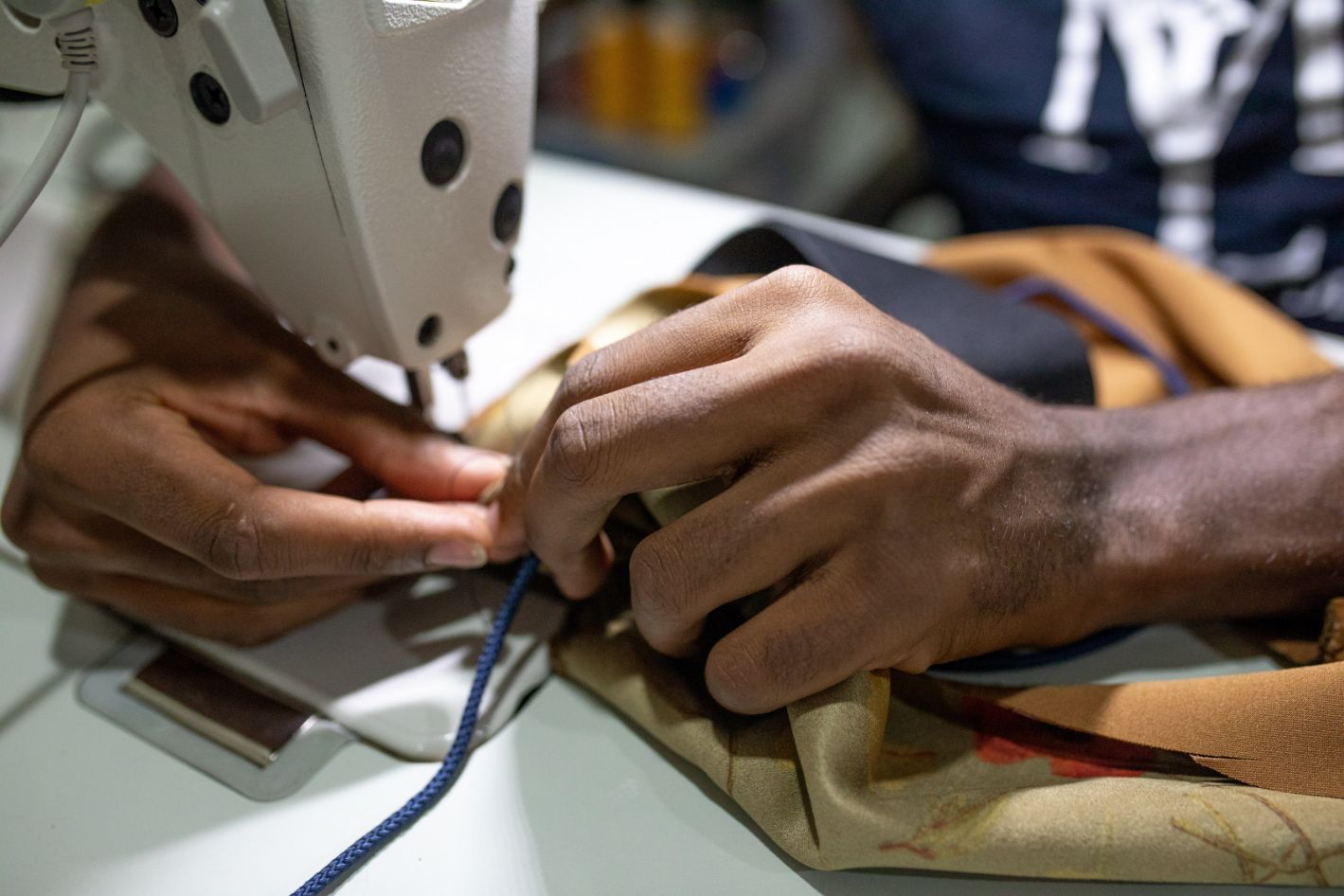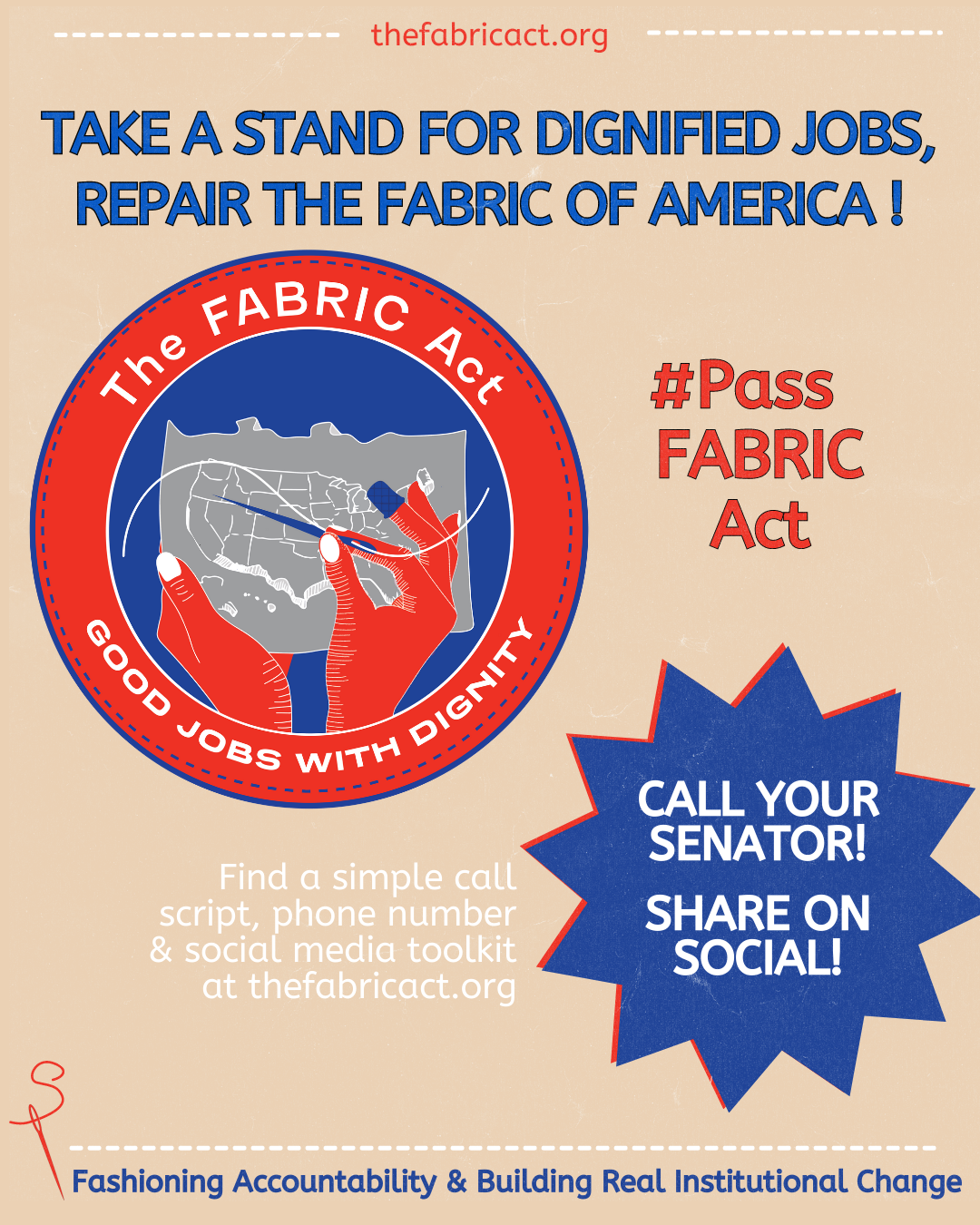When everything about it comes in excess, with people consuming way more clothes than they need, fast fashion’s downfall is imminent.
It’s no secret that consumers, often unaware of the ecological and social harm, treat low-priced garments as disposable, discarding them after wearing them seven or eight times on average and neglecting their consumer responsibility.
Unfortunately, this has been generating enviable growth for transnational clothing companies, which have been capitalizing on fast-paced production, cheap prices, and worst of all, modern slavery. The entire industry has in fact become synonymous with a snowballing waste crisis and labor exploitation.
Yet, there’s still hope — governments and conscious consumers are striving to slow down consumption and revolutionize the fashion industry through legislation, which is what the FABRIC Act strives to achieve.
Introduced by American Senator Kirsten Gillibrand (NY), the FABRIC Act aims to make sure that fashion companies abide by supply chain transparency, safe labor conditions, and fair wages, enabling stakeholders to hold fast fashion companies accountable for malpractices.
Below are some of the things the FABRIC Act seeks to achieve.
Overturn the industry-wide practice of subcontracting
A labor-intensive industry, fashion employs traditional methods of production that emerged in the 19th century. Garment workers cut and sew apparel manually, one by one, which makes it challenging for brands to cut down on human capital. So, how do brands streamline an enormous number of manual operations to maximize profit?
In the Western world, labor costs remain high, which pushes fashion companies towards subcontracting networks. While the companies take care of the design, marketing, and retailing, transnational retailers hire workers temporarily in developing nations at every stage of production. By this, they act as “manufacturers without factories” that outsource labor from independent subcontractors — either locally or overseas.
To speed up manual handling of materials, fashion companies divide the supply chain into multiple elements. They employ four or five tier chains, encompassing design, spinning, yarn production, dyeing, cutting, stitching, and the final garment construction.
In the Global South, fashion brands order raw textiles from independent fabric mills, sending them to cutting contractors. The contractors cut fabric based on garment patterns, later delivering it to independent sewing contractors. With buttons, zippers, and other garment elements, these contractors sew the fabric together with the components, under the surveillance of quality control inspectors. The inspectors, either from the brand or independent agents, oversee all of the steps in the design process.
Finally, the garment is sent to the company’s warehouses around the globe.
These complex manufacturing processes allow retailers to get away with unethical practices, poor labor conditions, and human rights violations. Subcontracted units are not regulated. They’re organizationally fragmented and geographically dispersed, which makes it hard for garment workers to unionize.
Currently, 82% of fashion brands refuse to disclose information on their supply chains, hiding their subcontractors, materials, and partnerships. The Fabric Act strives to change this, introducing a clause on “joint liability” that renders brands and subcontractors responsible for labor rights violations.
Ensure the safety of garment workers worldwide
From the payback of lost compensation to the elimination of poor labor conditions, the Fabric Act aims to ensure the safety of garment workers all over the world.
“The bill is quite simple. It just mandates a fair work environment and fair worker treatment, and it authorizes some resources to do this,”
— US Senator Kirsten Gillibrand.
The US government has also stepped in with legislation that fosters a fair and robust domestic garment manufacturing industry, introducing a bill to protect American garment workers in the beginning of May.
End internationalization of fast fashion retailers
Although the United States serves as one of the world’s largest apparel markets, 97% of its garments are made elsewhere. Your favorite all-American brands actually do very little assembling, if any, within the country.
Levi Strauss & Co., for instance, which is considered a staple of American denim, offers a few styles that are made from start to finish in the US. The rest of its apparel line is made in countries like Bangladesh, China, Vietnam, and Mexico.
As a shopper, you may wonder where once-booming US-based garment factories have disappeared. Unfortunately, global prospects have given rise to the fast fashion machine. While clothing brands are associated with specific countries around the world, their supply chains are dispersed worldwide. This is attributed to the rise of communication technologies and the overall shift in the socio-cultural state of the world.
Internalization, which refers to the spread of economic activities on the global scale, granted fast fashion brands more freedom. As “a general trend toward market liberalization,” the phenomenon turned the apparel production process upside down. In the early 1980s, brands began offshoring — moving away from domestic factories towards manufacturing sites overseas.
As a result, the United State lost its momentum in becoming a global leader in ethical garment production.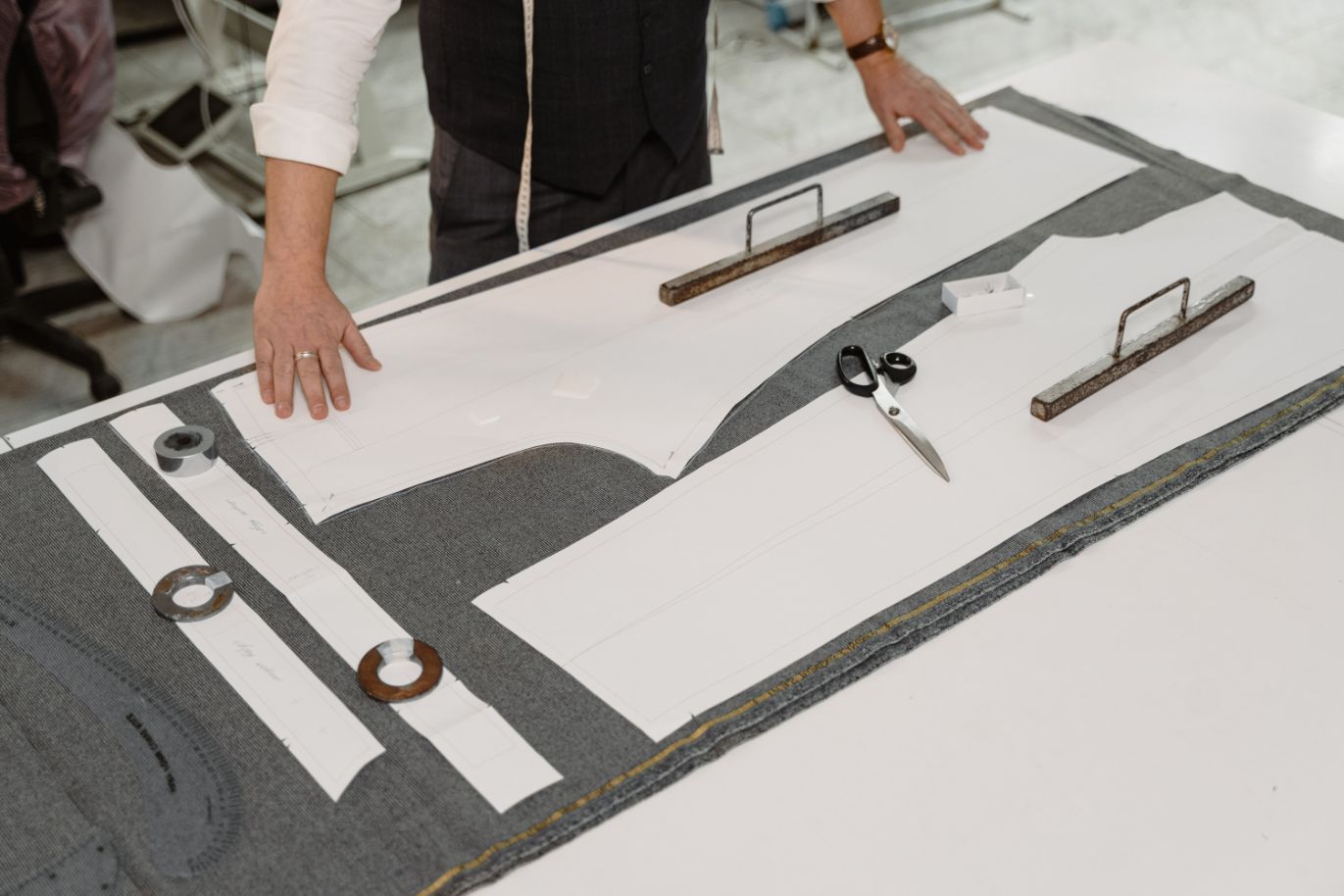
According to the United Nations Environmental Program, the fashion industry, encompassing textile and apparel creation, is the second largest driver of the global trade economy. International production strategies, however, diminish domestic employment across the apparel sector. Prior to the offshoring practices, US-based factories employed around 1.5 million garment workers. But as internalization emerged, the number came down to 116,200 by today.
Encourage Reshoring
The Fabric Act establishes a $40 million Domestic Garment Manufacturing Support Program to encourage reshoring, which will provide local manufacturers with training, safety improvements, and workforce development.
The bill’s primary objective lies in nearshoring, that is, in bringing manufacturing sites closer to the original country and aiming to accelerate industry-wide ambitions to increase nearshoring by 2025. Ultimately, the FABRIC act will gravitate US-based retailers towards localization, as global supply chains remain fragile and unregulated.
“This legislation would [ensure] equitable compensation for garment workers while also making historic investments in domestic garment manufacturing, so we can not only make American, but buy American,”
—Kirsten Gillibrand
Slow down fast-paced production cycles
Unlike haute couture, fast fashion brands tailor their production cycles to customer demands on an ongoing basis. With a myriad of collections and seasons per year, brands skyrocket production rates, generating more and more textile waste.
Historically, the fast fashion model was invented by renowned entrepreneur Amancio Ortega Gaona, creator of Zara and Inditex. His companies revolutionized the textile industry as they produced items in a shorter time period and at lower costs. As a result, Inditex — which in the 1960s was a small-scale, privately-held business that generated $30 million per year — evolved into the second-largest company in the world by the early 2000s.
Indeed, Inditex grew exceptionally fast thanks to its original business approach. Rather than following the traditional forms of fashion seasons, the brand opted for just-in-time production, distribution, and retail sales. Over 300 designers at the company worked tremendously to obtain information about what consumers might like, pursuing fashion magazines, celebrity stylists, and fashion weeks.
This helped them to predict future trends and craft collections accordingly.
As Inditex mastered the synergy of creativity and a rapid response to the market, fashion brands adopted their model on a larger scale. Striving to sell trends at record speed, brands like H&M, Forever 21, and American Apparel replicated the company’s super-fast supply chain network. As a result, they turned fashion into the second biggest polluting industry in the world.
“The whole fast fashion model is built around cheap clothing, and the U.S. is the biggest culprit, exporting more secondhand clothing than any other country on earth,”
— Samuel Oteng, a fashion designer at the Or Foundation
According to McKinsey & Co., Zara features 24 new collections every year while H&M offers around 15, refreshing them weekly. Such rapid turnaround of products, however, is only possible thanks to unethical practices as brands have to rely on low-quality materials and modern slavery to swiftly bring inexpensive styles to the end consumer.
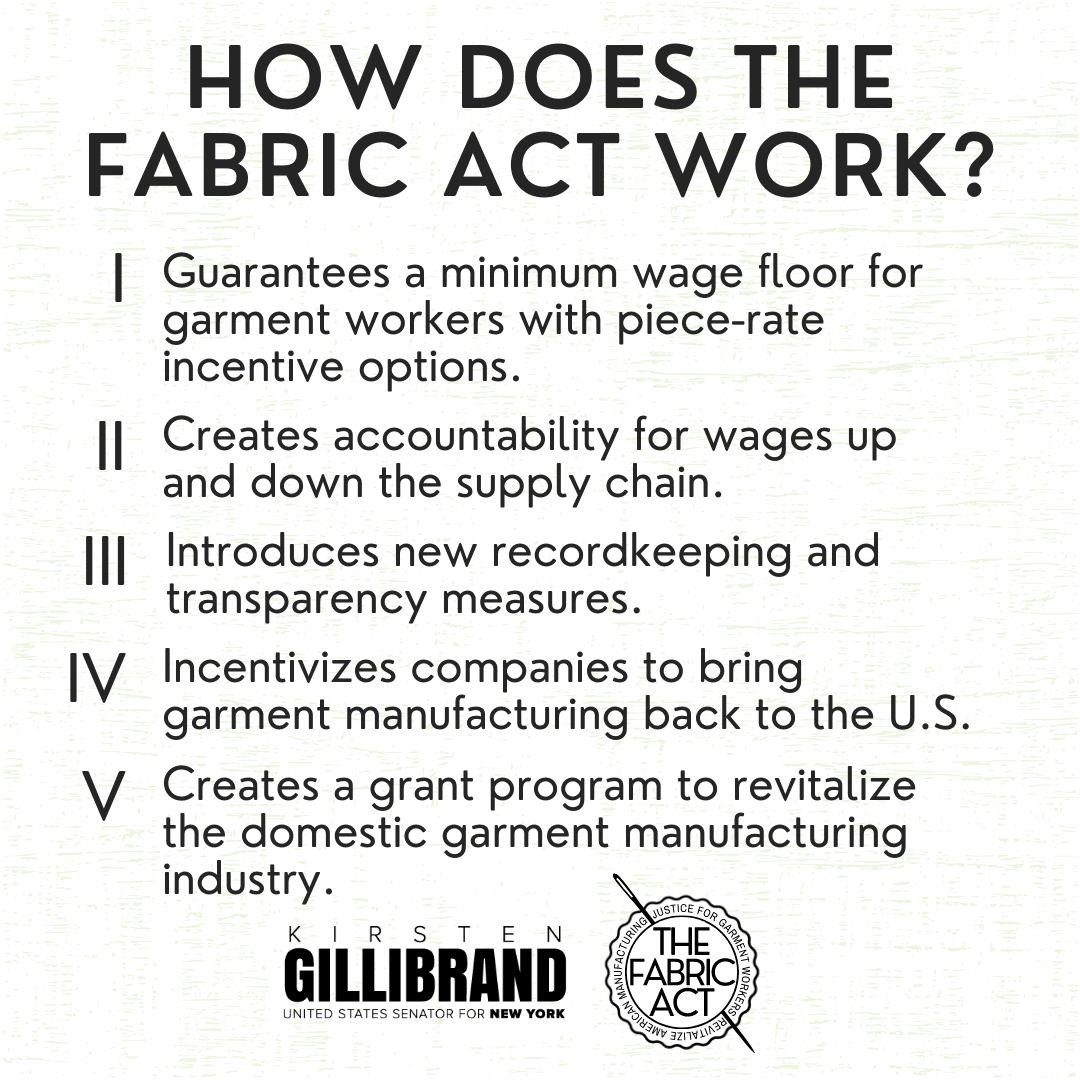 Hence, as brands bring in what’s trendy into the racks and eliminate all that is outdated right away, the FABRIC Act seeks to slow down production cycles and to safeguards garment workers whose exploitation lies at the heart of ultra-fast supply chains:
Hence, as brands bring in what’s trendy into the racks and eliminate all that is outdated right away, the FABRIC Act seeks to slow down production cycles and to safeguards garment workers whose exploitation lies at the heart of ultra-fast supply chains:
Ultimately, the bill enforces legally-binding barriers against the malpractices of fashion companies, which have been leeching off of seasonality, fleeting trends, and short garment lifecycles.
The FABRIC Act could end piece-rate compensation
When it comes to slow fashion, each bespoke garment is produced within a number of hours, which can vary by step, worker, or nature of the garment itself. Fast fashion, however, homogenizes artisanship, which comes at a price.
In determining average piece rates, fashion companies insist on machine-like consistency, labor division, standardized sizes, and oversimplified designs. The FABRIC Act delves deep into the operations of these companies, proposing workplace protections and manufacturing incentives.
While American workers earn a middle-class living, they still suffer the second-highest rate of wage theft of all the workers globally. Some of them earn as little as $2.68 an hour, which is below the federal minimum wage. The reason behind this has to do with companies’ unethical modes of compensation.
Fast fashion brands have shifted away from the time-rate payment system to its price-rate counterpart. This means they pay garment workers based on how much clothing they produce, prioritizing maximum output over quality. Under the price-rate system, garments count as profit as long as they’re completed. This, naturally, deteriorates the quality of clothes produced, as workers neglect the quality of stitching, trying to produce as many garments as possible.
The retailers, similarly, count only sellable garments, with no quality consciousness.
Beside producing as many garments as possible, the workers fall victim to tragic injuries and alienation during production. When using machinery, they suffer from severe cuts and burns that occur in the post-production, ironing section. As they are divided into individuals, rather than groups, workers find themselves alienated from their peers. They also suffer from headaches, stress, and depression, due to the length and exhaustive nature of their work.
Imposing fines of up to $50 million for any violations, the FABRIC Act mandates the federal minimum wage for garment workers.
That is to say, the bill seeks to “thread the needle” of protecting garment workers who serve as the cornerstone of the American economy. The legislation deals with the economic well-being of one of the most vulnerable groups in the US, comprising women, people of color, and underpaid immigrant workers.
Originally sponsored by Senators Bernie Sanders, Elizabeth Warren, and Cory Brooker, the FABRIC Act embodies a bold step at the federal level, which could revolutionize fast fashion as we know it. The legislation is key to eliminating pay loopholes, unequal labor distribution, and the exploitation of human labor on a global scale.
“This legislation will help ensure that when we go to our closets in the morning for something to wear, we can find clothes that were actually made in America and made fairly,”
— Kirsten Gillibrand
Express your support for the FABRIC Act – spread the word on social media and get in touch with your local senator today! #PassFABRICAct
Editor’s Note: The opinions expressed here by the authors are their own, not those of Impakter.com. — Featured Photo Source: Pexels.


